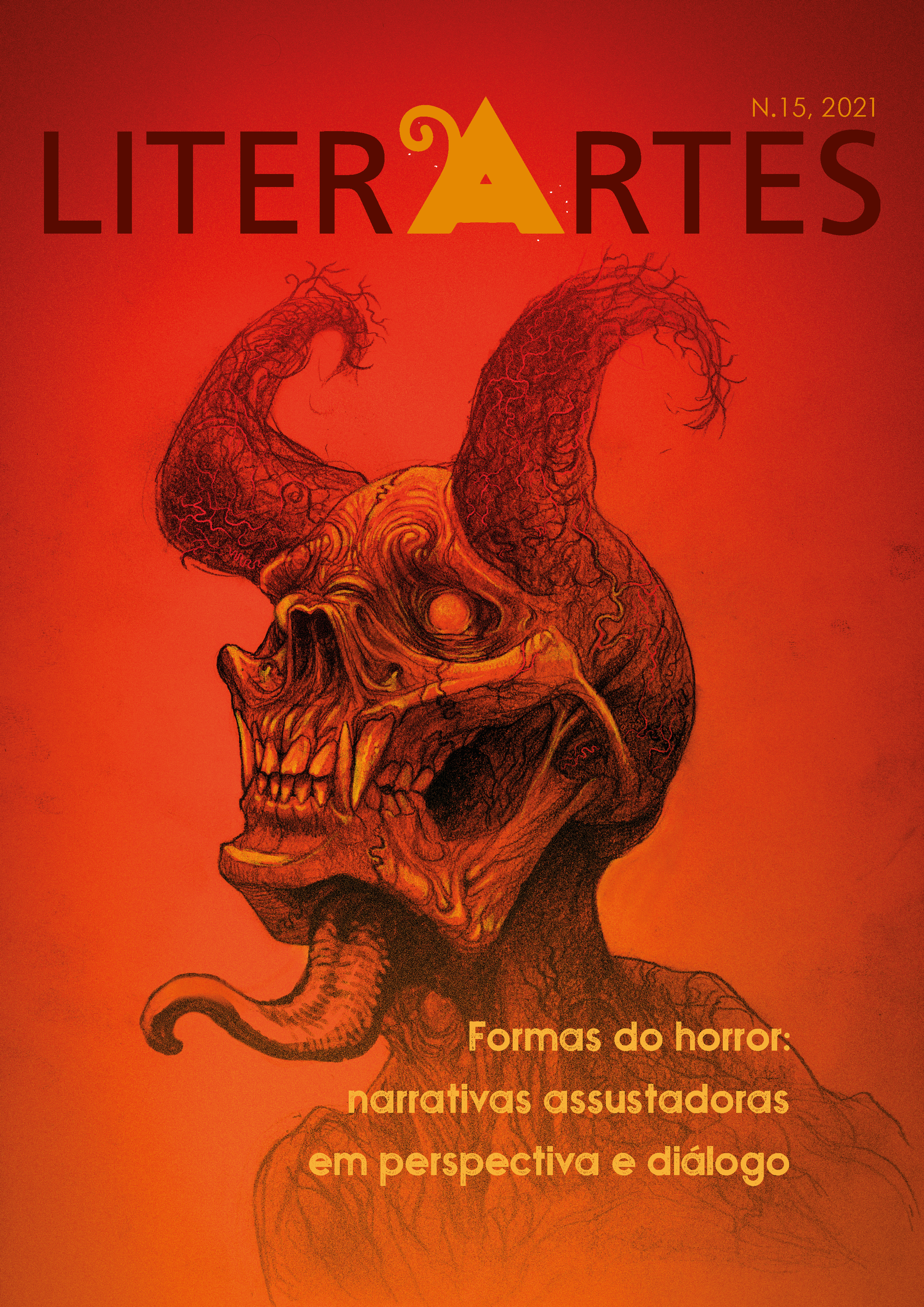We’re doing this because you were home: an analysis of elements of the slasher formula in The Strangers (2008)
DOI:
https://doi.org/10.11606/issn.2316-9826.literartes.2021.188450Keywords:
The Strangers, Post-modern horror, Post-9/11 horror, Slasher filmsAbstract
This article verifies how Bryan Bertino’s 2008 film The Strangers articulates the slasher formula (CLOVER, 2015; DIKA, 1985) in order to tell a horror story that is in tune with the cultural context from the first decade of the 2000s in the United States. Drawing from analyses of the cultural impact of the terrorist attacks on September 11th, 2001, we point out evolutions in the slasher convention, including the dissidence from slasher films made to be deeply self-referential and campy. We also demonstrate how the recognizable structure is subverted to play with viewer expectations, potentializing its bleak and nihilistic ending, a narrative feature described by Pinedo (1996) as a post-modernist trend that breaks away from the classical horror structure.
References
AUFDENHEIDE, Patricia. Documentary Film: A Very Short Introduction. New York: Oxford University Press, 2007.
CLOVER, Carol J. Men, Women, and Chain Saws: Gender in the Modern Horror Film - Updated Edition. Princeton: Princeton University Press, 2015.
DIKA, Vera. Paradigms: The Basic Elements of The Stalker Formula. In: Games of Terror: A Definition, Classification, And Analysis of a Subclass of The Contemporary Horror Film, The Stalker Film. New York: University Microfilms International, 1985. p. 88–106.
KVARAN, Kara M. “You’re All Doomed!” A Socioeconomic Analysis of Slasher Films. Journal of American Studies, Cambridge, v. 50, n. 4, p. 953–970, 2016.
MCSWEENEY, Terence. “Daddy, I’m scared. Can we go home?” Fear and Allegory in Frank Darabont’s The Mist (2007). In: MCSWEENEY, Terence (org.). American Cinema in the Shadow of 9/11. Edinburgh: Edinburgh University Press, 2017. p. 227–248.
NASH INFORMATION SERVICES, LLC. The Numbers, 2020. Worldwide Box Office
Search. Available at: https://www.the-numbers.com/. Access in: Jun. 27, 2021.
PINEDO, Isabel. Recreational Terror: Postmodern Elements of The Contemporary Horror Film. Journal of Film and Video, Chicago, v. 48, n. 1/2, p. 17–31, 1996.
STEERS, Stevie L. Slasher Films and Self-Harm: A Relationship of Self-Hatred and Trauma. 2020. Thesis (Master of Arts in English) – Department of English and the College of Liberal Arts, Graduate College of Marshall University, Huntington (WV), 2020.
STONE, Bryan. The Sanctification of Fear: Images of the Religious in Horror Films. Journal of Religion & Film, Omaha, NE, v. 5, n. 2, 2001.
THE STRANGERS. Direction: Bryan Bertino. Production: Doug Davison; Roy Lee and Nathan Kahane. Los Angeles: Universal Pictures, 2008. Available online on HBO Max (85 minutes). Access in: Jul. 28, 2021.
URBANO, Cosimo. Projections, suspense, and anxiety: the modern horror film and its effects. Psychoanalytic review, New York, v. 85, n. 6, p. 889–908, 1998.
WETMORE, Kevin J. Post-9/11 Horror in American Cinema. New York: Continuum, 2012.
Downloads
Published
Issue
Section
License
Copyright (c) 2021 Vitor Fernandes, Claudio Vescia Zanini

This work is licensed under a Creative Commons Attribution-NonCommercial 4.0 International License.
Autores que publicam nesta revista concordam com os seguintes termos:
- Autores mantém os direitos autorais e concedem à revista o direito de primeira publicação, com o trabalho simultaneamente licenciado sob a Licença Creative Commons Attribution que permite o compartilhamento do trabalho com reconhecimento da autoria e publicação inicial nesta revista.
- Autores têm autorização para assumir contratos adicionais separadamente, para distribuição não-exclusiva da versão do trabalho publicada nesta revista (ex.: publicar em repositório institucional ou como capítulo de livro), com reconhecimento de autoria e publicação inicial nesta revista.
- Autores têm permissão e são estimulados a publicar e distribuir seu trabalho online (ex.: em repositórios institucionais ou na sua página pessoal) a qualquer ponto antes ou durante o processo editorial, já que isso pode gerar alterações produtivas, bem como aumentar o impacto e a citação do trabalho publicado (Veja O Efeito do Acesso Livre).



